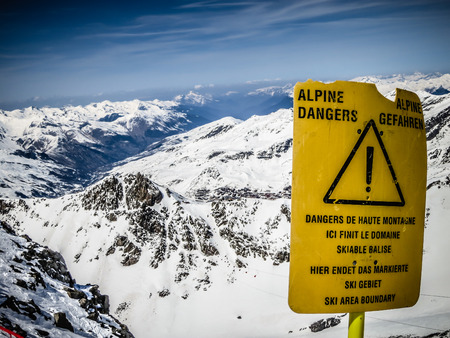Understanding Shelter Priorities in the American Wilderness
When youre out in the American wilderness, building a reliable shelter is one of your top priorities. Whether you’re hiking in the Rocky Mountains, camping in the deserts of Arizona, or trekking through the dense forests of the Pacific Northwest, understanding the key principles of shelter building can make all the difference for your safety and comfort. Let’s break down what you need to focus on when creating a shelter that really works for you.
Core Principles of Shelter Building
There are three main principles to keep in mind whenever you’re setting up a shelter:
- Protection from the Elements: Your shelter needs to shield you from wind, rain, snow, and sun. Exposure to these elements is one of the biggest risks in the wild.
- Insulation from Temperature Extremes: Depending on where you are, temperatures can swing dramatically between day and night. Good insulation keeps you warm in cold climates and cool in hot conditions.
- Strategic Site Selection: The spot you pick for your shelter can be just as important as how you build it. Avoid hazards like falling branches, flooding areas, or animal paths.
Shelter Priorities Across Diverse American Landscapes
The United States has incredibly varied wilderness environments. Each region comes with its own set of challenges. Here’s a simple guide to help you prioritize what matters most based on where you are:
| Region | Main Weather Threats | Key Shelter Priority |
|---|---|---|
| Pacific Northwest Forests | Rain, dampness, wind | Waterproof roofing & elevated sleeping area |
| Rocky Mountains | Cold, snow, altitude winds | Insulation & windbreaks |
| Southwest Deserts | Extreme heat, sun exposure, sudden storms | Shade & ventilation; avoid flash flood zones |
| Southeast Woodlands/Swamps | Bugs, humidity, thunderstorms | Mosquito netting & raised platforms |
| Northern Plains | High winds, temperature swings | Wind protection & ground insulation |
Choosing a Safe and Strategic Site Location
No matter where you are, picking a good location is essential. Here are some quick tips:
- Avoid low-lying areas that could flood if it rains.
- Look for natural windbreaks like large rocks or thick trees.
- Stay clear of animal trails and dead trees that might fall (“widowmakers”).
- If possible, find a spot near water—but not too close (about 200 feet away) to avoid flooding and wildlife traffic.
Your First Steps After Arriving at Camp
Once you arrive at your chosen area, take a few minutes to assess your surroundings. Think about which weather threats are likely overnight or during your stay. Prioritize getting overhead cover if rain is coming or focus on insulation if cold is expected. Remember: In many parts of the U.S., weather can change fast, so adaptability is key!
2. Essential Materials and Resources: What’s Available and How to Use It
Understanding Your Surroundings
When building a shelter in the American wilderness, knowing what materials are available in your environment is key. Different regions—from the dense forests of the Pacific Northwest to the arid deserts of the Southwest—offer unique resources for outdoor shelter construction.
Common Natural Materials Across America
| Material | Where to Find It | Best Uses |
|---|---|---|
| Pine Boughs | Forests (Northeast, Rockies, Pacific Northwest) | Roof insulation, bedding, basic walls |
| Bark (Birch, Cedar) | Northern woods, coastal forests | Waterproof roofing, siding |
| Dead Wood & Branches | Everywhere—look for fallen limbs on forest floors | Framework, support beams, stakes |
| Grass & Leaves | Plains, meadows, forest floors | Insulation, covering gaps, bedding material |
| Rocks & Stones | Mountains, riverbanks, deserts | Foundation, heat reflection walls, windbreaks |
| Cactus & Succulents | Deserts (Southwest) | Lining for windbreaks or temporary shade; water source in emergencies* |
*Use caution and proper identification when using plants like cactus for shelter or hydration.
Sourcing Materials Responsibly
- Leave No Trace: Only use dead or downed wood; avoid cutting live trees or damaging habitats.
- Avoid Sensitive Areas: Steer clear of protected lands and fragile ecosystems (wetlands, alpine meadows).
- Minimal Impact: Gather materials from a wide area rather than stripping one spot bare.
- Packing Out: If you bring synthetic materials (like tarps), be sure to pack out all gear and trash.
Essential Gear and Tools for Shelter Building
The right gear can make a big difference. Here’s what experienced American backpackers and survivalists often carry:
| Tool/Gear Item | Main Function |
|---|---|
| Fixed-Blade Knife or Multi-Tool | Cutting branches, shaping stakes, general tasks |
| Folding Saw or Compact Axe | Sawing small logs and branches for framework or firewood |
| Tarp or Emergency Blanket | Quick shelter roof/walls; rain protection; heat reflection; versatile groundsheet |
| Cordage (Paracord/Bankline) | Tying shelters together; making traps; hanging food away from animals |
| Duct Tape/Gorilla Tape | Patching holes; quick repairs; improvising fastenings |
| Shelter-Specific Stakes/Pegs | Securings tarps/groundsheets if natural stakes aren’t available |
Packing Smart: Tips from US Backpackers
- Double Up: A tarp can serve as both a roof and emergency blanket—choose multipurpose items to save weight.
- Cordage is King: Bring more paracord than you think you’ll need—it’s useful for everything from tying knots to creating makeshift repairs.
- Kits Over Single Items: Many US hikers build their own “shelter kits” with small amounts of each tool rather than one bulky item.
- Pocket Survival Guides: Consider packing a lightweight field guide relevant to your region for plant identification and additional tips.
- Double Up: A tarp can serve as both a roof and emergency blanket—choose multipurpose items to save weight.
- Cordage is King: Bring more paracord than you think you’ll need—it’s useful for everything from tying knots to creating makeshift repairs.
- Kits Over Single Items: Many US hikers build their own “shelter kits” with small amounts of each tool rather than one bulky item.
- Pocket Survival Guides: Consider packing a lightweight field guide relevant to your region for plant identification and additional tips.
Shelter building in the American wild is about working with what nature gives you—and supplementing with smart gear choices. With a little know-how and the right resources at hand, you’ll be ready to adapt no matter where your adventure takes you.

3. Shelter Types: From Quick Survival Structures to Comfortable Backcountry Camps
Popular Shelter Designs in the American Wilderness
When you’re out in the wilds of America—whether it’s dense forests, arid deserts, or rugged mountains—your shelter can be your best friend. Choosing the right design isn’t just about comfort; it’s about survival and adapting to the environment. Here’s a breakdown of popular shelter types, when to use them, and what makes each one unique.
Overview Table: Shelter Types, Pros, Cons, and Best Biomes
| Shelter Type | Best For | Pros | Cons | Recommended Biomes |
|---|---|---|---|---|
| Debris Hut | Quick warmth & insulation | Uses natural materials, great for cold weather, easy to build solo | Not much space, time-consuming if alone, limited ventilation | Forests, woodlands |
| Lean-to | Simplicity & rapid setup | Easy construction, good wind block, can use tarp or branches | Poor insulation on open side, less protection from rain/snow | Forests, near ridgelines |
| Tarp Shelter | Lightweight & versatility | Packs small, quick setup, customizable shapes for conditions | Relies on having a tarp/cordage, offers limited insulation | Forests, deserts, mountains—almost anywhere! |
| Snow Shelter (Quinzhee/Iglu) | Extreme cold & snow cover | Excellent insulation, blocks wind completely, fun to build with group | Takes time and effort, risk of collapse if built poorly | Mountain snowfields, northern forests in winter |
| Tent (Modern Setup) | Comfort & convenience for longer stays | User-friendly, bug/waterproof options, reliable in many weathers | Bigger packs to carry in, higher cost compared to DIY shelters | All biomes: forests, deserts, mountains, plains |
Details on Each Shelter Design
Debris Hut (Classic Forest Survival Shelter)
This is your go-to when you need warmth fast and have lots of leaves or pine needles around. Build a simple frame with sticks and pile on debris for insulation. It’s cozy and keeps body heat in but doesn’t leave much room for gear or movement.
Lean-to (Simple Windbreaker)
The lean-to is all about speed. Prop a big branch between two trees and angle other sticks against it. Cover it with branches or a tarp if you have one. It works best as a shield from wind and light rain but needs extra work to stay dry during storms.
Tarp Shelters (Versatile and Lightweight)
If you’ve got a tarp and some cordage in your backpacking kit, you’re golden. Tarps can be pitched high for airflow or low for weather protection. They’re perfect for minimalist hikers covering big miles in any American terrain.
Snow Shelters (Winter Warriors)
When deep snow covers the ground—like in the Rockies or Sierra Nevada—a quinzhee (snow mound hollowed out) or igloo keeps you safe from biting winds. They require patience but are lifesavers when temps plummet.
Tents (Modern Comfort)
No doubt about it: modern tents are tough to beat for comfort and all-around protection. You’ll see everything from ultra-light single-person shelters to roomy family domes at trailheads across America’s national parks. Just remember that carrying a tent means more weight but fewer worries once you set up camp.
Shelter Selection Tips by Biome:
- Forests: Debris huts and lean-tos excel here thanks to abundant natural materials.
- Deserts: Tarp shelters provide shade and airflow; avoid heat buildup by setting up early or late in the day.
- Mountains: Tents offer reliable protection from sudden storms; snow shelters are essential above treeline in winter months.
Selecting the right shelter depends on where you are and what resources you have. Knowing these classic American wilderness setups will keep you safer—and sleeping better—no matter where your adventure takes you.
4. Building Techniques and Safety Strategies
Step-by-Step Shelter Construction in the American Wilderness
Building a safe and effective shelter in the American wilderness isn’t just about comfort—it’s about survival. Here’s a simple, step-by-step guide to help you build a sturdy shelter while keeping safety and environmental responsibility in mind.
Step 1: Selecting the Right Site
- Look for flat, elevated ground: Avoid valleys and low spots where water can collect during sudden rains or flash floods.
- Check above and around: Stay clear of dead trees (“widowmakers”), loose rocks, and animal trails.
- Avoid proximity to water sources: Stay at least 200 feet from rivers or lakes to reduce wildlife encounters and flooding risks.
Step 2: Gathering Materials Responsibly
- Use downed branches and natural debris: Minimize damage by not cutting live trees or plants.
- Select sturdy materials: Look for dry wood, leaves, pine needles, or bark for insulation.
Step 3: Building Your Shelter – Popular Types
| Shelter Type | Description | Main Materials Needed |
|---|---|---|
| Lean-to | A slanted roof using a support log propped against a tree or rock; cover with branches and leaves for insulation. | Pole/log, smaller branches, leaves/pine boughs |
| Debris Hut | A-frame structure built over your body size with a thick layer of insulating debris (leaves, grass). | Sturdy pole, sticks for ribs, plenty of leaf litter/grass |
| Tarp Shelter | Quick and lightweight option using a tarp tied between trees; adjust angles to block wind/rain. | Tarp or emergency blanket, cordage/rope, stakes/rocks |
Step 4: Focus on Safety Measures
- Fire Safety: Build fires well away from shelters; clear ground of flammable material. Never leave fires unattended.
- Wildlife Protection: Store food away from sleeping area (hang it from a tree if possible). Don’t keep scented items in your shelter.
- Weather Preparedness: Double-check shelter stability before storms. Anchor materials securely using rocks or stakes.
- Emergency Exits: Always have a clear path out of your shelter in case you need to evacuate quickly (fire, flood, animal).
Step 5: Minimizing Environmental Impact
- Avoid digging trenches or disturbing soil unless absolutely necessary for drainage in extreme weather.
- Dismantle shelters after use and scatter materials to return the site to its natural state.
- Follow Leave No Trace principles—pack out all trash and leftover supplies.
Shelter Safety Quick Reference Table
| Threat | Shelter Adjustment/Safety Tip |
|---|---|
| Wildlife Encounters (bears, raccoons) | No food in shelter, use bear bags/canisters hung away from camp |
| Flash Floods | Avoid low ground and dry creek beds; choose higher ground for building site |
| Sudden Weather Changes (wind, rain) | Add extra insulation/windbreaks; secure all materials tightly; face opening away from prevailing winds |
| Cold Temperatures/Nighttime Chill | Pile up more debris/insulation; make shelter compact to trap body heat; use reflective surfaces if available (emergency blanket) |
Shelter building is about preparation, awareness, and respect—for both nature and your own well-being. By following these steps and strategies, you’ll be better equipped to stay safe no matter what the American wilderness throws your way.
5. Maintenance, Troubleshooting, and Shelter Adaptation
Building a shelter in the American wilderness is just the beginning—keeping it safe and comfortable requires regular maintenance, quick problem-solving, and smart adaptation as conditions change. This section will help you keep your shelter in top shape, troubleshoot common issues, and adapt to whatever Mother Nature throws your way.
Regular Shelter Maintenance
Just like any home, even a backcountry shelter needs check-ups. Here are some key steps to maintain your shelter:
| Task | How Often | What to Look For |
|---|---|---|
| Check structural supports | Daily or after storms | Loose poles, sagging branches, shifting rocks |
| Inspect weatherproofing | After rain or snow | Leaks, soaked insulation, pooling water |
| Clear debris & fallen branches | Every morning | Pine needles, leaves, snow buildup that could weigh down roof or walls |
| Tighten lashings & knots | As needed (especially after high winds) | Fraying cordage, slipping knots, loose bindings |
| Repair holes or tears in cover material (tarps, bark) | Immediately when found | Punctures, rips, thinning areas letting wind or rain inside |
Troubleshooting Common Shelter Problems in the Backcountry
No matter how carefully you build, things can go wrong. Here are some quick fixes for frequent issues encountered in the American outdoors:
| Problem | Quick Fix / Solution |
|---|---|
| Shelter leaks during rainstorm | Add an extra layer of tarp or pine boughs; dig small drainage ditches around the perimeter to direct water away. |
| Sagging roof or collapsed section from heavy snow/wind | Reinforce with extra support poles; brush off snow regularly; retension guy lines. |
| Damp sleeping area/ground moisture seeping up | Add an insulating ground layer: pine needles, dry leaves, emergency blanket. Elevate bedding if possible. |
| Pest invasion (ants, rodents) | Store food away from shelter; sweep up crumbs; seal entry points with mud or rocks. |
| Shelter too hot/cold due to changing weather | Add/remove insulation layers; adjust ventilation by opening/closing vents/flaps. |
| Lashings coming undone over time | Double-check knots daily; replace worn cordage with fresh material. |
Shelter Adaptation for Evolving Conditions
The American wilderness is famous for its unpredictable weather and diverse environments—from sudden summer thunderstorms in the Rockies to chilly desert nights. To stay safe and comfortable, be ready to adapt your shelter:
Add Insulation When Temperatures Drop:
- Pile on more natural insulation: dried grass, leaves, moss between roof layers.
- If you have a tarp or emergency blanket, drape it inside for heat reflection.
Create Shade During Heat Waves:
- Erect a simple shade structure using an extra tarp or leafy branches over the main shelter.
- Add extra airflow by opening up one side of your shelter (if wind and bugs allow).
Mud and Water Management:
- If heavy rain is expected, raise your sleeping platform using logs or rocks.
- Ditch around your shelter to channel water away before storms hit.
Adapting for Wind Protection:
- Add additional windbreaks using logs or stacked brush on the windward side.
- If possible, relocate entrance away from prevailing winds; use natural features like boulders for extra sheltering effect.
Pro Tip: Keep Tools Handy!
A good knife or multitool makes all repairs easier. If you’re camping for several days or weeks in one spot, fashion a simple toolkit from local materials—strong sticks for digging and prying, sharpened stones for cutting cordage—to help you adapt quickly as conditions change.


